Eudora welty the petrified man – In Eudora Welty’s captivating short story “The Petrified Man,” readers embark on a journey through the American South, where Welty’s unique writing style and profound exploration of human nature converge. With her skillful use of symbolism, imagery, and evocative language, Welty paints a vivid portrait of a community grappling with the complexities of identity, social norms, and the transformative power of love.
Delving into the intricate tapestry of “The Petrified Man,” we will uncover the significance of the Southern setting, unravel the complex motivations of its characters, and decipher the profound themes that resonate throughout the story. Welty’s masterful storytelling invites us to contemplate the nature of human relationships, the fragility of life, and the enduring power of the human spirit.
Eudora Welty’s Writing Style
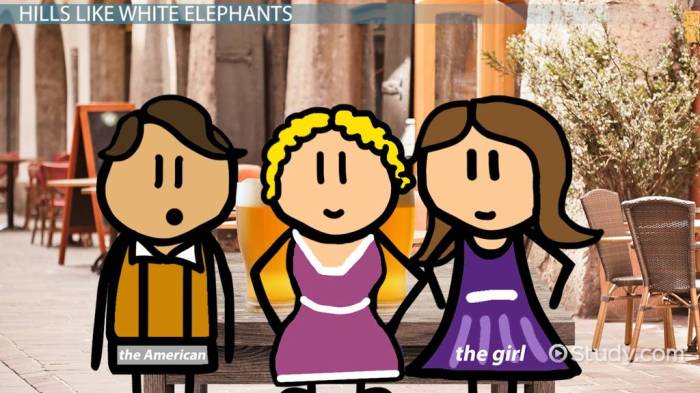
Eudora Welty’s writing style is characterized by its rich symbolism, vivid imagery, and lyrical language. Her work often explores the complexities of human relationships and the challenges of life in the American South. Her unique voice and evocative storytelling have earned her a place among the most celebrated writers of the 20th century.
Use of Symbolism
Welty’s use of symbolism is one of the most striking features of her writing. She often uses objects and images to represent abstract ideas or emotions. For example, in her short story “A Worn Path,” the protagonist Phoenix Jackson’s journey to town to buy her grandson some medicine is symbolic of her own journey through life.
Vivid Imagery
Welty’s writing is also known for its vivid imagery. She paints a vivid picture of the world around her, using sensory details to create a sense of place and atmosphere. In her novel “The Optimist’s Daughter,” for example, she describes the protagonist Laurel’s childhood home as “a big, rambling old house, with wide porches and high ceilings.”
This description helps to create a sense of the family’s history and the passage of time.
Lyrical Language
Welty’s writing is also notable for its lyrical language. She uses language in a poetic way, creating a sense of beauty and wonder. In her short story “The Wide Net,” for example, she describes the setting as “a green and golden world, where the sun was a great ball of fire and the wind was a sweet song.”
This lyrical language helps to create a sense of the natural world’s beauty and power.
The Role of the South in Welty’s Work
The Southern setting plays a pivotal role in Eudora Welty’s stories, serving as a backdrop that shapes the lives and experiences of her characters. Welty’s portrayal of the South is complex and multifaceted, encompassing both its beauty and its complexities.
The Southern Landscape and Culture
Welty’s stories vividly capture the physical and cultural landscape of the South, from its lush forests and winding rivers to its small towns and rural communities. She explores the ways in which the environment influences the lives of her characters, shaping their values, beliefs, and relationships.
Welty also delves into the region’s rich cultural traditions, such as storytelling, music, and food, which play a central role in the lives of her characters.
Social and Cultural Issues
Welty’s work also addresses a range of social and cultural issues prevalent in the South during her time. She explores themes of race, class, and gender, examining the ways in which these divisions shape the experiences of her characters. Welty’s stories often grapple with the tensions between tradition and modernity, as the South undergoes rapid social and economic change.
She also examines the complex relationships between individuals and their communities, exploring the ways in which they are both shaped by and shaped by their surroundings.
Themes in “The Petrified Man”
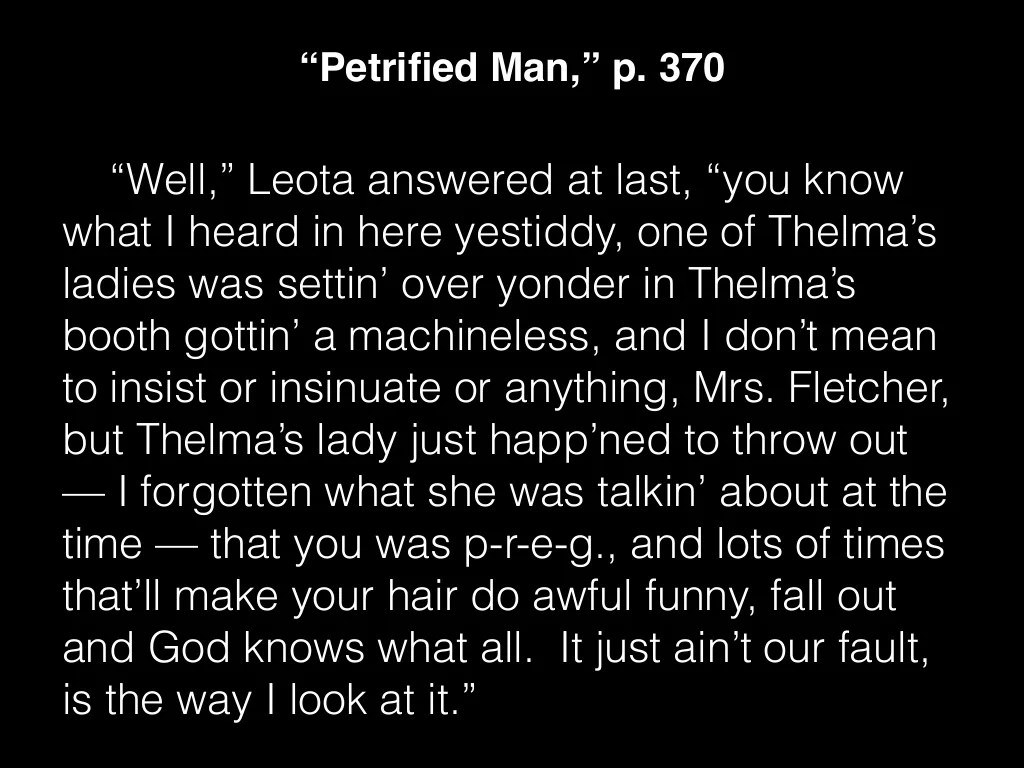
Eudora Welty’s “The Petrified Man” explores various themes through its characters and events. These include the complexities of human relationships, the search for identity, and the transformative power of love.
Eudora Welty’s “The Petrified Man” explores themes of isolation and alienation. If you’re looking for a deeper understanding of the text, you can find a comprehensive Desiree’s Baby PDF Answer Key online. This resource provides detailed insights into the story’s characters, plot, and symbolism.
Returning to Welty’s masterpiece, “The Petrified Man” continues to captivate readers with its haunting depiction of the human condition.
Isolation and Loneliness
- Welty depicts the isolation experienced by the characters in the story. Leota, the protagonist, feels disconnected from her community and struggles to find meaningful connections.
- The townspeople’s treatment of the petrified man further highlights the theme of isolation. They view him as an outsider and treat him with indifference.
The Search for Identity
- Leota’s journey in the story can be seen as a search for her own identity. She initially conforms to societal expectations but gradually comes to embrace her true self.
- The petrified man also undergoes a transformation, from being an object of fear to a symbol of hope and redemption.
The Transformative Power of Love
- Leota’s love for the petrified man transforms both herself and the community. It allows her to overcome her isolation and find acceptance.
- The townspeople’s initial fear of the petrified man gradually gives way to compassion, demonstrating the power of love to bridge divides.
Symbolism and Imagery
Welty uses symbolism and imagery to convey these themes throughout the story. The petrified man represents the fear and isolation that can paralyze individuals and communities. The transformation of the petrified man into a symbol of hope and redemption highlights the power of love to overcome these obstacles.
Character Analysis in “The Petrified Man”: Eudora Welty The Petrified Man
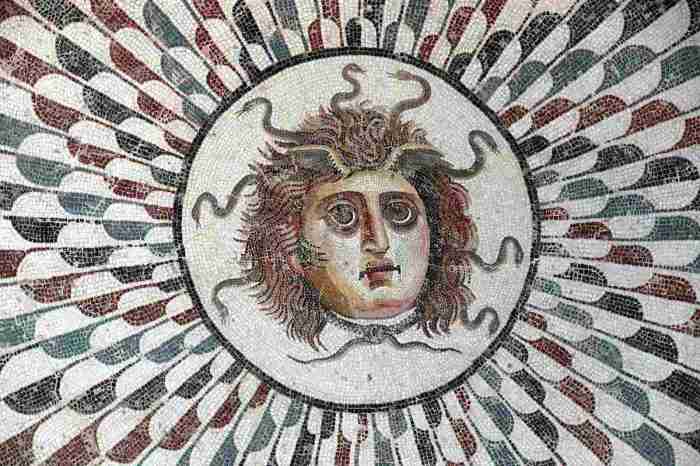
Eudora Welty’s “The Petrified Man” features a cast of intriguing characters who drive the story’s themes and conflicts. Their motivations, relationships, and struggles reveal the complexities of human nature and the impact of societal norms.
The Grandparents
The grandparents, a couple living in rural Mississippi, embody the traditional values and beliefs of the South. They are deeply religious, valuing family and community above all else. Their unwavering faith and sense of duty shape their interactions with others, particularly their granddaughter, Myra.
Myra
Myra, a young woman who has recently returned home from college, represents the changing social landscape of the South. She is independent, ambitious, and eager to break free from the confines of her small town. Her conflicting desires to conform and to pursue her own path create internal tension and conflict.
The Petrified Man
The petrified man, a mysterious figure who arrives in town, symbolizes the unknown and the potential for transformation. His presence challenges the townspeople’s preconceptions and forces them to confront their own fears and prejudices. Through his enigmatic nature, Welty explores the fluidity of identity and the power of empathy.
Mr. Marble
Mr. Marble, a traveling salesman who becomes infatuated with Myra, represents the allure of the outside world. His charm and worldly experience contrast with the familiarity of Myra’s hometown, offering her a glimpse of a different life. However, his superficiality and lack of genuine connection ultimately expose the limitations of his character.
Characterization and Theme
Welty’s skillful characterization in “The Petrified Man” serves to develop the story’s central themes. The contrast between the traditional values of the grandparents and Myra’s modern aspirations highlights the changing nature of Southern society. The petrified man’s enigmatic presence challenges the townspeople’s preconceptions, forcing them to question their own identities and beliefs.
Through these characters, Welty explores the complexities of human nature, the power of empathy, and the search for meaning in a rapidly changing world.
Symbolism and Imagery in “The Petrified Man”
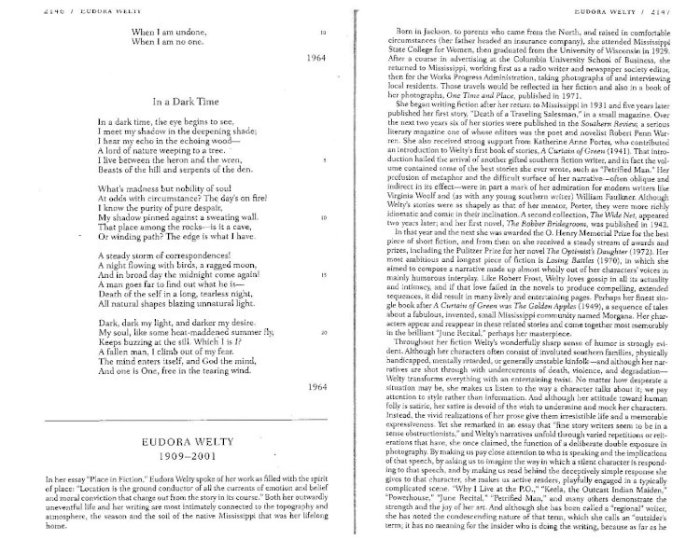
Eudora Welty’s “The Petrified Man” is a rich tapestry of symbolism and imagery that enhances the story’s meaning and creates a vivid and evocative atmosphere. Welty uses these literary devices to explore complex ideas and emotions, adding depth and resonance to her narrative.
The Petrified Man as a Symbol of Loss and Trauma
The titular petrified man serves as a powerful symbol of the protagonist’s loss and trauma. His unmoving, lifeless form represents the emotional numbness and isolation she experiences after her husband’s death. The petrified man’s presence throughout the story highlights the enduring impact of grief and the difficulty of moving forward.
The Garden as a Symbol of Growth and Renewal
In contrast to the petrified man, the garden imagery in the story represents hope and renewal. The protagonist’s efforts to tend to her garden symbolize her gradual healing process and her determination to find joy and meaning in life despite her loss.
The vibrant colors and lush growth of the garden provide a stark contrast to the barrenness of the petrified man, suggesting that life and hope can emerge even from the darkest of times.
The Lightning Storm as a Symbol of Transformation
The lightning storm that occurs towards the end of the story is a potent symbol of transformation and release. The protagonist’s encounter with the storm represents her confrontation with her grief and her ultimate acceptance of her husband’s death. The storm’s violence and chaos mirror the emotional turmoil she has endured, but it also brings with it a sense of catharsis and renewal.
Welty’s Use of Symbolism and Imagery, Eudora welty the petrified man
Welty’s skillful use of symbolism and imagery in “The Petrified Man” allows her to convey complex emotions and ideas with remarkable precision. These literary devices enhance the story’s meaning, create a vivid and immersive atmosphere, and provide a deeper understanding of the protagonist’s inner journey.
Cultural and Historical Context of “The Petrified Man”
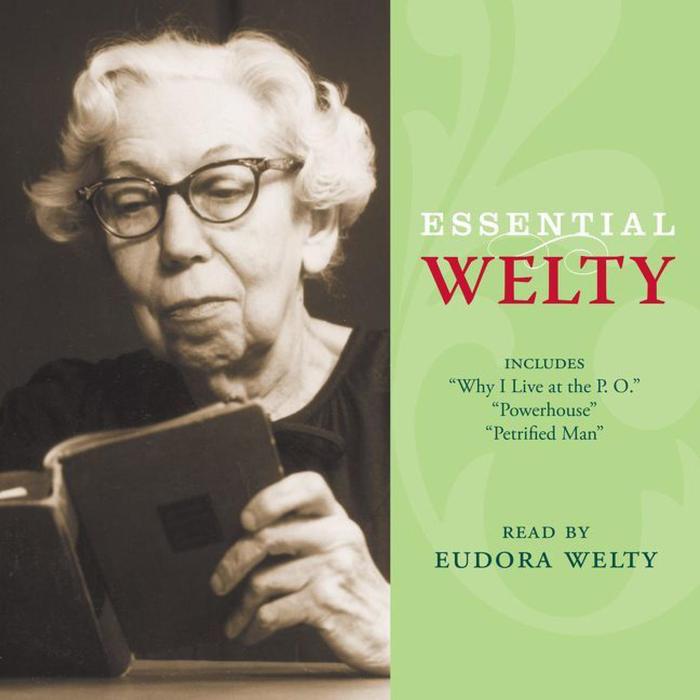
Eudora Welty’s “The Petrified Man” was written in the midst of significant social and cultural changes in the American South. The story reflects the tensions and complexities of the post-World War II era, as well as the enduring legacy of the region’s history.
Social and Cultural Issues
The story explores themes of racial inequality, class divisions, and the changing role of women in society. Welty portrays the complexities of race relations in the South, highlighting the subtle and overt forms of discrimination faced by African Americans. She also examines the social hierarchy and the ways in which class and privilege shape individual experiences.
Influence of Welty’s Experiences
Welty’s own experiences growing up in the South deeply influenced her writing. She witnessed firsthand the social and economic disparities that existed in her community. Her experiences gave her a unique perspective on the complexities of Southern culture, which she captured in her stories.
Historical Events
The story also reflects the historical events of its time. The post-World War II era was a period of great social and political change. The Civil Rights Movement was gaining momentum, and the Cold War was shaping the global landscape.
These events influenced Welty’s writing, as she explored the ways in which historical forces shape individual lives.
General Inquiries
What is the main theme of “The Petrified Man”?
The story explores themes of identity, love, and the transformative power of human connection.
Who is the main character in “The Petrified Man”?
The main character is Miss Leota, a lonely woman who finds herself drawn to a mysterious stranger.
What is the significance of the petrified man in the story?
The petrified man represents the potential for transformation and the possibility of redemption.
How does Welty use symbolism in “The Petrified Man”?
Welty uses symbols such as the petrified man, the moon, and the river to convey deeper meanings and emotions.
What is the significance of the Southern setting in “The Petrified Man”?
The Southern setting influences the characters’ lives and relationships, shaping their values and beliefs.